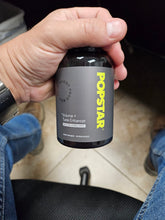Ball busting refers to the deliberate application of pressure, impact, or force to the male genital region, primarily the testicles. Often intertwined with certain cultural or recreational practices, it can also appear in specific adult contexts. However, it is crucial to understand that while this term may have recreational, fetishistic, or performance-oriented connotations, it can carry medical concerns if not approached responsibly and knowledgeably. In this article, we’ll explore the definition of ball busting, its origins, potential health implications, psychological impacts, and frequently asked questions from a men’s health perspective. Our goal is to provide an extensive, well-rounded overview that balances technical insight with considerations for public interest and safety.
Table of Contents
- Definition of Ball Busting
- Origins and Cultural Context
- Medical Perspective and Anatomy
- Physical Risks & Potential Injuries
- Psychological and Emotional Aspects
- Safety Tips and Precautions
- Lifestyle and Social Considerations
- Frequently Asked Questions
- Conclusion
Definition of Ball Busting
Ball busting is a term that commonly describes the intentional striking, squeezing, or inflicting of impact to the male genital area. The practice can vary considerably in its form and intensity, ranging from playful taps during a comedic performance to consensual acts within erotic or fetish settings. In a men’s health context, the primary concern is not necessarily the social or cultural motivation behind ball busting, but rather understanding its physiological implications and how best to ensure safety if such activities are engaged in.
Because the testicles are both delicate and essential for reproduction and hormonal balance, any forceful impact warrants caution. While humor, group sports jokes, and certain adult subcultures may reference ball busting, it’s vital to recognize potential harm and the steps that can mitigate risks. In some contexts, the term “ball busting” is used interchangeably with “testicular trauma” or “impact play,” though the former is more informal and the latter more clinical or descriptive.
Origins and Cultural Context
The origins of ball busting are not set in a single historical moment. Rather, glimpses of testicular targeting can be found in various sports or martial arts contexts. Additionally, comedic routines—particularly slapstick comedy—have frequently capitalized on lower-body hits for laughs. In some forms of martial arts training, strikes to the groin are taught as a last-resort defense technique.
Within certain adult subcultures, ball busting appears under the broader umbrella of BDSM or kink practices. For individuals who engage in this with consent, communication, and precautionary measures, it may represent an extreme form of physical play or a way to explore pain and pleasure dynamics. However, from a men’s health perspective, this practice highlights the importance of awareness about potential injuries and complications, ensuring enthusiasts know how to minimize harm and seek help if issues arise.
Over time, the cultural lens on ball busting has expanded. As social understanding around sexuality and individual preference broadens, so too has the discussion on testicular impact—no longer relegated to taboo corridors, it finds sporadic mention in health articles, comedic sketches, and adult lifestyle forums. Despite varied cultural connotations, medical and psychological considerations remain central whenever the male reproductive system is subjected to force.
Medical Perspective and Anatomy
To understand the potential implications of ball busting, it helps to have a clear view of male anatomy in the groin region. The testes, or testicles, reside within the scrotum and produce sperm as well as testosterone—a critical hormone for male sexual development, muscle mass, bone density, and other systemic functions. Surrounding tissues and structures, including blood vessels, nerves, and the epididymis, all contribute to overall genital and reproductive health.
When discussing ball busting, we’re primarily concerned with the immediate and longer-term impacts on these structures. The scrotum offers only limited protection, meaning the testicles can be vulnerable to external force. While mild impacts might lead to temporary pain and minor bruising, stronger or repetitive force can cause more serious complications such as testicular torsion, rupture, or chronic pain syndromes. Other related injuries can include infection risk from hematomas, nerve damage, and potential disruptions in testosterone production.
In a clinical sense, testicular trauma is managed with rest, pain relief measures (such as anti-inflammatories or cold compresses), and, in more severe cases, surgical intervention. Understanding how the testicles and surrounding structures function allows men to make more informed decisions about the activities they partake in, especially those involving potential testicular harm.
Physical Risks & Potential Injuries
Because the testicles are highly sensitive, direct trauma can trigger intense pain and immediate physiological responses like nausea, dizziness, or even shock. Below is an overview of possible physical risks associated with ball busting:
- Bruising and Swelling: Even moderate impacts can lead to contusions (bruises) in the scrotal area. Swelling can be a sign of internal bleeding or fluid accumulation.
- Testicular Torsion: This occurs when the spermatic cord twists, cutting off blood supply to the testicle. Torsion is a medical emergency that demands prompt medical attention to prevent permanent damage.
- Rupture or Fracture: Although relatively rare, extreme impacts have the potential to rupture the testicle’s protective covering, leading to severe internal damage. Sudden swelling, intense pain, and discoloration can be signs of this injury.
- Chronic Pain Syndromes: Repeated trauma may contribute to ongoing discomfort, known as chronic orchialgia, which can significantly impact quality of life.
- Infections: In cases of severe damage or laceration, infections might arise if the scrotum experiences open wounds or compromised tissue.
- Nerve Damage: Over time, repeated impacts can potentially desensitize or damage nerves, changing the sensation profile of the area.
As with any form of physical play, consent, caution, and awareness of potential complications are integral. Immediate medical attention is recommended if severe pain, swelling, discoloration, or other alarming symptoms occur.
Psychological and Emotional Aspects
While ball busting is often viewed primarily as a physical phenomenon, there are also psychological dimensions to consider. For some individuals, the practice can be linked to specific preferences, sensations, power dynamics, or emotional release. Within certain sexual contexts, it may form part of a power exchange scenario. In comedic or social environments, it might serve as a form of rough humor or playful bonding. However, the emotional response to testicular impact can vary widely, influenced by personal thresholds for pain, past experiences, and cultural attitudes.
Before participating in ball busting, individuals should maintain open communication about boundaries, comfort levels, and potential triggers. Feelings of shame, anxiety, or confusion may arise if the activity is not consensual or if a partner’s enthusiasm surpasses someone’s comfort zone. In serious or ongoing adult relationships, couples and partners who explore this practice may find it beneficial to discuss emotional well-being and personal motivations. If unresolved emotional distress or trauma surfaces, professional guidance from a therapist or counselor experienced with sexual health or relationship dynamics may prove beneficial.
Safety Tips and Precautions
Given the serious nature of potential injuries, those who incorporate ball busting—either for comedic effect, sports conditioning, or within consensual adult play—are advised to follow certain precautions. Though these tips cannot eliminate all risks, they may reduce the likelihood of severe complications:
- Communication: If partners or friends are involved, establish a verbal or nonverbal way (such as a safe word) to indicate when the intensity is too high. Clear, honest communication is key.
- Gradual Intensity: If exploring the practice as a form of erotic or performance-based activity, increase the level of force gradually to gauge comfort levels and avoid surprise injuries.
- Protective Gear: In comedic acts or sports demonstrations, specialized cups or athletic supporters can reduce the potential for testicular damage.
- Monitor Signs of Injury: If swelling, bruising, prolonged pain, or blood in the urine occurs, contact a healthcare professional immediately for an evaluation.
- Limit Frequency: Frequent or repeated trauma can accumulate risk. Allow adequate time for recovery, especially if any discomfort lingers after an event.
- Professional Guidance: For those integrating ball busting into more extreme arenas, seeking advice from sex educators, kink-aware professionals, or medical practitioners can offer greater assurance of safety.
Most importantly, remember that consent and mutual respect are indispensable for avoiding unwanted harm or emotional distress. Everyone has a different pain threshold and comfort zone, so open dialogue about boundaries is fundamental.
Lifestyle and Social Considerations
Beyond medical risks, there are multiple lifestyle considerations that may come into play with ball busting. Depending on personal preferences and cultural context, ball busting can either be a fleeting comedic gag, part of a performance, or an intimate aspect of a couple’s shared experiences. Here are a few relevant points:
- Relationship Dynamics: If a partner is encouraging or interested in ball busting, honest discussions about motivations and limits will help ensure both parties remain comfortable.
- Public Perception: Outside of personal relationships, openly discussing this practice can invite misunderstandings or negative judgments. Discretion in public forums or social circles can help manage privacy.
- Integration with Physical Fitness: Some individuals regularly engage in testicular conditioning exercises or martial arts that occasionally involve testicular contact. Understanding the line between training and harmful trauma is essential.
- Legal and Ethical Aspects: Consent is crucial, and activities involving unsolicited or forced contact can lead to legal ramifications and moral concerns.
Adopting a considerate mindset, one that takes into account the comfort and well-being of all participants, fosters a more positive experience. Prioritizing safety and consent ensures that ball busting, if chosen, remains an informed choice rather than a reckless act.
Frequently Asked Questions
What does ball busting mean in a medical sense?
Medically, ball busting can be categorized under testicular trauma, where any forceful contact can lead to bruising, swelling, or more severe conditions. Healthcare providers typically recommend caution and, if injuries occur, an immediate evaluation to prevent long-term damage.
Why do some people practice ball busting?
People might engage in ball busting for multiple reasons: comedic effect, curiosity, exploring physical boundaries, or as a consensual activity in certain adult contexts. There can also be a sense of thrill or heightened adrenaline that comes with the risk or pain. In BDSM or fetish communities, ball busting can serve as a form of intense sensation play or power exchange.
Is ball busting considered safe?
Like any activity that involves physical force, ball busting carries inherent risks. Although mild impact may result only in temporary discomfort, repeated or forceful impacts can lead to serious injuries, including testicular torsion, rupture, or chronic pain. Safety largely depends on clear communication of boundaries, graduated intensity levels, and appropriate protective measures.
How can I reduce the risk of injury?
Risk-minimization can include gradually increasing intensity rather than delivering sudden, forceful strikes; employing safety equipment like athletic cups; and communicating with anyone involved about pain thresholds and potential concerns. Staying alert to any signs of severe injury—prolonged pain, discoloration, swelling—and seeking medical help promptly are also critical steps.
Can ball busting affect fertility?
Severe or repeated trauma to the testicles can potentially impact sperm quality or testosterone production. While a single minor incident is unlikely to cause lasting effects, frequent or intense injuries may lead to complications, including reduced fertility over time. For those concerned, consulting a healthcare professional about reproductive health is advisable.
What are immediate symptoms of a serious testicular injury?
Extreme pain that intensifies rather than subsides, swelling, redness, bruising, or blood in the urine can point to severe injury. Some injuries, like testicular torsion, may also include feelings of lightheadedness or even fainting. If any of these symptoms arise, immediate medical attention is crucial.
How do I treat minor bruising from moderate ball busting?
A mild bruise often responds well to rest and cold compresses applied in short intervals. Over-the-counter pain relievers or anti-inflammatory medications may help alleviate discomfort. However, any sign of worsening or persisting pain after 24-48 hours should prompt a visit to a healthcare provider.
Is ball busting always sexual?
Not necessarily. While it has a recognized place within certain adult contexts, it can also appear in comedic situations or sports training contexts without a sexual dimension. The significance attributed to ball busting varies based on intent, setting, and the relationship between participants.
Can ball busting lead to long-term chronic pain?
Yes, repeated trauma to the testicles can trigger conditions like chronic orchialgia, a persistent testicular pain that may affect day-to-day life. Treating chronic orchialgia can involve pain management strategies, physical therapy in some cases, or surgical intervention if a clear underlying cause is identified.
Does ball busting carry psychological risks?
Depending on personal sensitivities, any intimate activity involving pain can bring about complex emotional responses. Feelings such as anxiety or distress may arise, particularly if boundaries are crossed. Engaging in open communication, establishing clear expectations, and ensuring full consent are essential ways to mitigate potential psychological strain.
Can ball busting be part of a healthy relationship?
Some couples incorporate ball busting into their sexual or recreational repertoire by mutual agreement. If it is done responsibly, with clear conversation about safety and limits, it can remain a personal choice within a healthy relationship. However, it is vital to ensure both parties are genuinely comfortable, physically and emotionally.
Should I see a doctor if I feel persistent discomfort after ball busting?
Absolutely. Any lingering or unexplained pain, swelling, or discoloration following testicular impact warrants a medical evaluation. Complications like internal bleeding or infection may require prompt diagnosis and treatment to prevent long-range damage.
Are there safer alternatives to ball busting?
Individuals interested in the sensations or power dynamics often associated with ball busting might explore alternative forms of sensation play that do not involve direct testicular trauma. Some opt for controlled forms of impact play on less vulnerable areas of the body, reduced intensity levels, or protective gear to lessen risk.
How does consent factor into ball busting?
Consent is paramount. Unwanted or surprise testicular contact can be extremely painful and potentially harmful. Clear verbal or non-verbal communication is essential to ensure that no one experiences distress or injury against their will. In any fetish or adult practice, consent is a foundational principle that upholds respect and safety.
Conclusion
Ball busting may be a provocative and seemingly niche subject, but its implications for men’s health are real and require thoughtful consideration. From comedic instances to the realm of consenting adult play, bowing to the sensitive nature of the testicles is critical to reducing harm and preserving well-being. Understanding the underlying anatomy, potential risks, and emotional repercussions provides insight into making informed decisions—whether your interest is purely academic, comedic, or part of intimate exploration.
While mild or occasional testicular impact might result in nothing worse than brief pain, repeated or forceful trauma can produce significant injuries with long-term repercussions. If practiced, doing so responsibly means emphasizing communication, consent, and awareness of personal limits. In tandem, it is vital to remain attentive to symptoms of serious injury, such as extended pain or discoloration, and to seek immediate professional advice when needed. Ultimately, by considering both the physical and psychological aspects of ball busting, individuals can better safeguard their health, uphold respectful interaction, and foster a responsible attitude toward this often-misunderstood topic.




















































